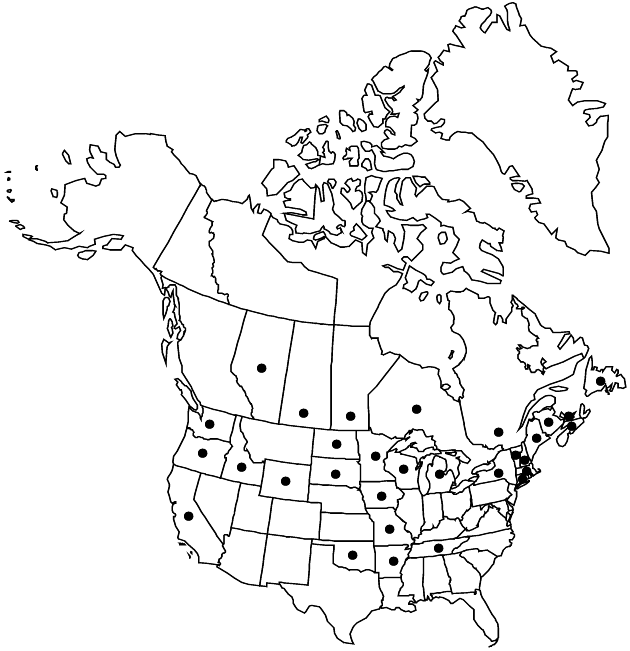Erigeron strigosus var. septentrionalis
Rhodora 44: 340. 1942.
Annuals or biennials; rhizomes none. Stems sparsely and loosely strigose (hairs ascending to spreading, 0.5–1 mm). Leaves: basal broadly oblanceolate or oblanceolate, 5–15(–20) mm wide, margins usually dentate, faces sparsely strigose or strigoso-hirsute. Involucres (2.5–)3–4 mm. Phyllaries strigose (hairs flattened, 0.5–1.2 mm).
Phenology: Flowering (Apr–)May–Oct.
Habitat: Mostly in open, disturbed sites
Elevation: 20–1000 m
Distribution

Alta., Man., N.B., Nfld. and Labr. (Nfld.), N.S., Ont., P.E.I., Que., Sask., Ark., Calif., Conn., Idaho, Iowa, Maine, Mass., Mich., Minn., Mo., N.H., N.Y., N.Dak., Okla., Oreg., S.Dak., Tenn., Vt., Wash., Wis., Wyo., introduced in Europe.
Discussion
The distributional data given here are highly provisional; the author has not attempted to sort this taxon accurately, if it can be. According to A. Cronquist (1947), var. septentrionalis is scattered mostly in the northern half of the continent and (1994) is “found chiefly in New England and adjacent Canada.” It is “morphologically transitional” to Erigeron annuus (A. Cronquist 1994) and, as implied by the synonymy, may be more appropriately treated as part of E. annuus (D. Frey et al. 2003). As noted by Fernald in the original description, the stems may be nearly glabrous or lightly hispid, in contrast to the more densely strigose to strigillose ones of typical E. strigosus.
Selected References
None.